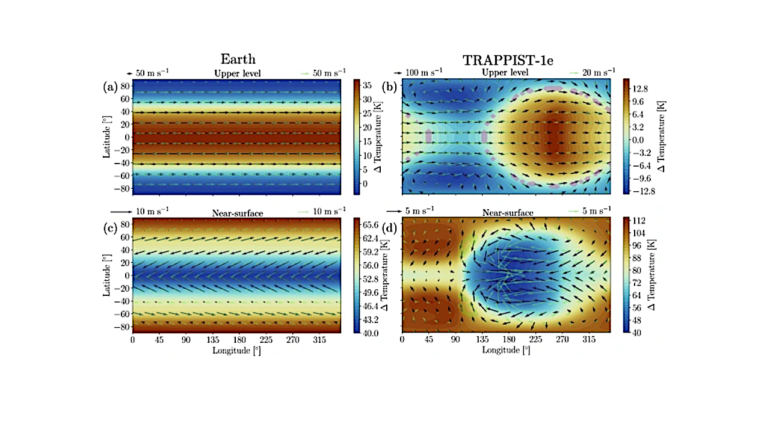With the launch of the James Webb Space Telescope (JWST), the study of exoplanetary atmospheres and their potential habitability reached new heights. A team of researchers led by Dr. Assaf Hochman from the Institute of Earth Sciences at Hebrew University of Jerusalem, Dr. Thaddeus D. Komacek from The University of Maryland, College Park, and Paolo De Luca from the Barcelona Supercomputing Center, delved into the effects of greenhouse gas supplements on temperate terrestrial exoplanets and Earth.
Their findings demonstrate a parallel relationship between CO2 supplement and intensified warming in non-irradiated regions, impacting global circulation patterns. The work is published in the journal Scientific Reports.
Analyzing ExoCAM and CMIP6 model simulations, the research team discovered that the addition of CO2 leads to heightened warming in areas shielded from direct sunlight, i.e., the night side and polar regions. These localized temperature changes can bring about significant alterations in global circulation. Employing a dynamical systems framework, the researchers gained additional insights into the vertical dynamics of the atmospheres.
The study also reveals that introducing a greater supplement of CO2 into the atmosphere enhances temporal stability near the surface but decreases stability at low pressures. Surprisingly, this observation holds true for both Earth and TRAPPIST-1e, despite their distinct climate states. Dr. Assaf Hochman, from the Hebrew University of Jerusalem, emphasized the importance of comprehending the intricate connections between greenhouse gases and climate dynamics on both Earth and potentially habitable exoplanets.
“These findings shed light on the complex interactions between greenhouse gases and climate dynamics, offering crucial insights into the habitability of exoplanets and the potential impacts of greenhouse gas emissions on Earth’s climate,” said Dr. Assaf Hochman.
This study contributes to expanding knowledge in exoplanetary science and climate research. As the quest for habitable exoplanets continues, studying Earth’s climate dynamics becomes pivotal in identifying and characterizing potentially habitable worlds beyond our solar system.
More information:
Assaf Hochman et al, Analogous response of temperate terrestrial exoplanets and Earth’s climate dynamics to greenhouse gas supplement, Scientific Reports (2023). DOI: 10.1038/s41598-023-38026-8
Provided by
Hebrew University of Jerusalem
Citation:
Greenhouse gas supplement increases warming and alters circulation patterns on Earth and Earth-like exoplanets (2023, July 13)



